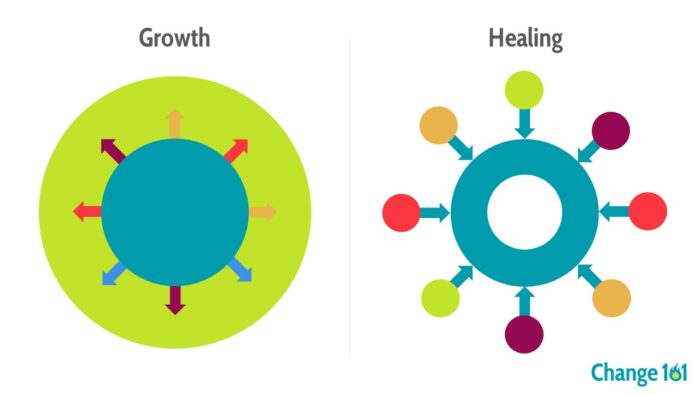Stuck
As change agents, we eventually come to understand that the wholesale transformation we envision and yearn for will likely not come to pass, at least not in the way we imagine. Instead, we learn to find purpose in the journey rather than the destination. We seek fulfillment in everyday progress. We strive for a more modest and humble growth, in ourselves as individuals, in our organizations, and in our societies.
Yet still, many of us remain, or feel, stagnant. Not only does wholesale change elude us, but that sense of everyday growth does as well. We find ourselves dealing with the same challenges day after day, year after year. We get in the same arguments, make the same mistakes, or find ourselves in the same destructive relationships or behaviors. Or, despite tangible growth and movement in our personal lives or careers, a seemingly impenetrable sense of inertia, sadness, or emptiness persists.
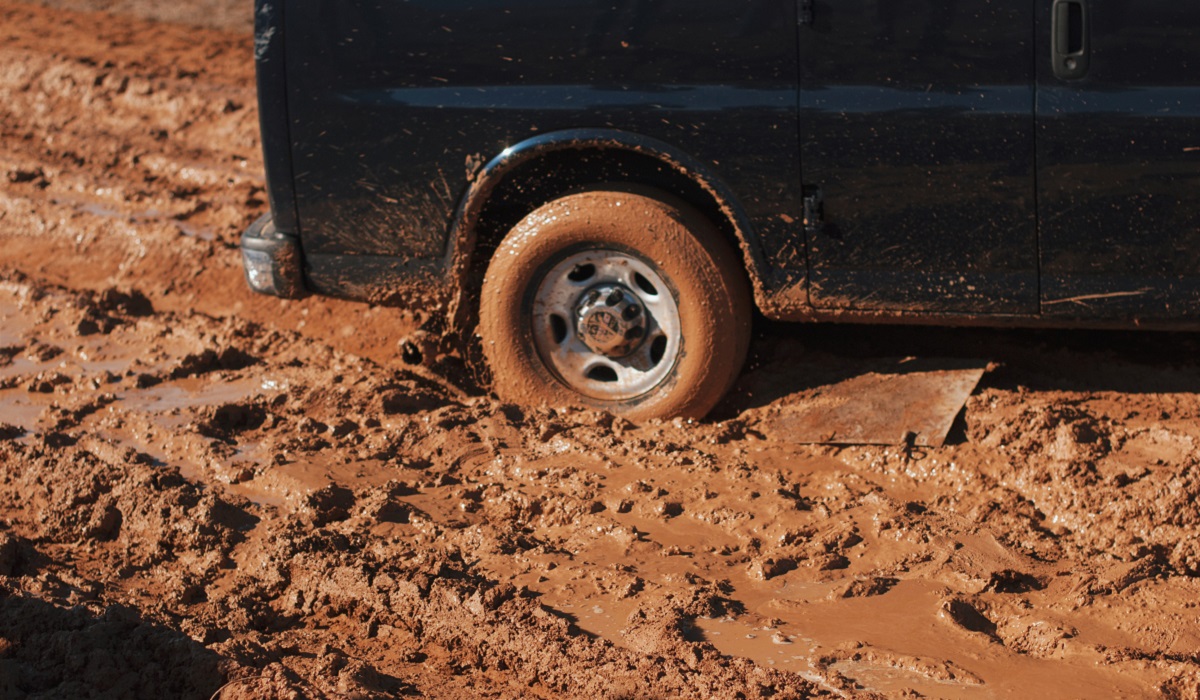
We employ a bevy of strategies to jar ourselves loose from these ruts. As individuals, we start working out more, go back to school, travel, take up a new hobby, or move to another town. As organizations, we re-write our mission statement, institute a new organizational structure, or bring in new leadership. As nations, we vote in a new political party, pass a new bill, or create a new holiday.
But at times, despite our earnest efforts, we find ourselves right back where we started. The same challenges persist. We can’t help but feel the growth and purpose we yearn for elude us. We are stuck. Our journey has stalled.
Pushing forward with a broken leg
It’s easy to chalk up our stagnation to some sort of personal failure. We tell ourselves we aren’t worthy of more. We haven’t worked hard enough. We aren’t smart or creative enough.
But more often than not, we are simply misreading the actual problem at hand. We are trying to grow by expanding our knowledge or changing our circumstances or habits when we actually need to heal by processing and integrating our emotional wounds. Growth is developing and harnessing new aspects of ourselves and our genius. It is bringing something new into being. In contrast, healing is retrieving and re-integrating old aspects of ourselves that have been left behind or experiences that we never fully processed. It is releasing toxicity and mending wounds.
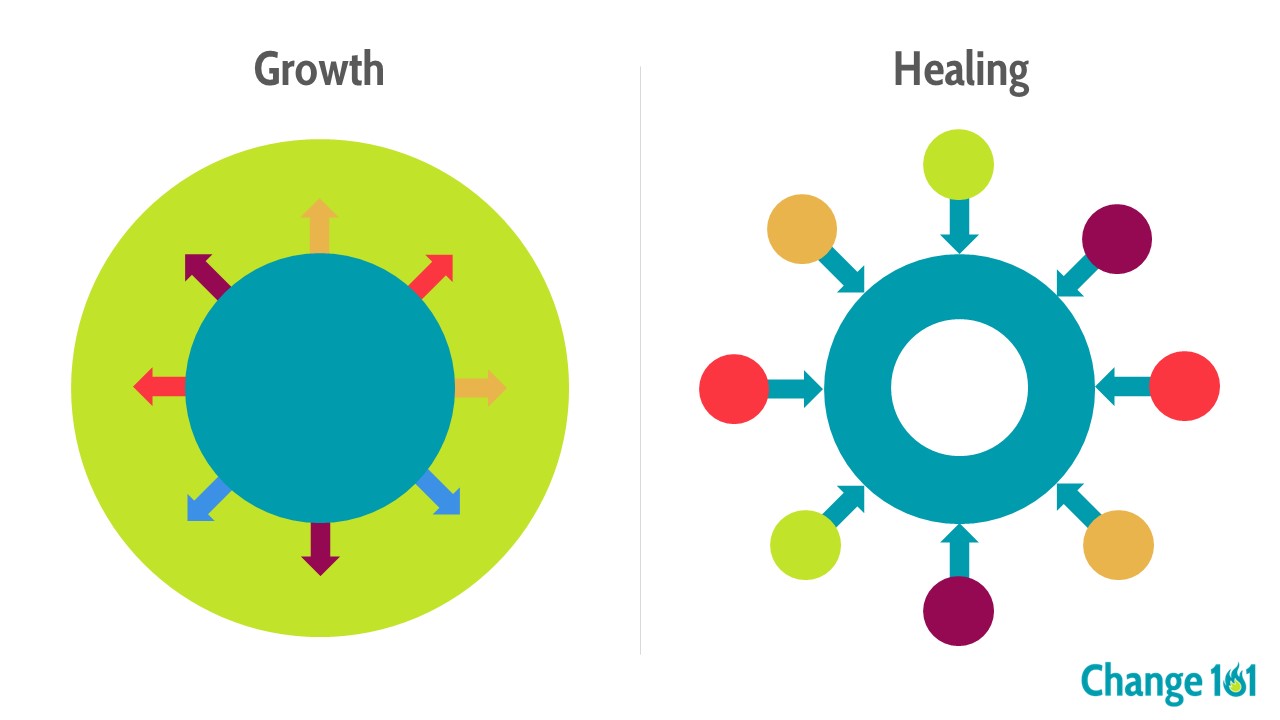
Often, we can’t move forward in our journeys because we have not healed from past wounds. It’s as if we are climbing up a mountain with a broken leg. We keep trying to push forward in spite of our injury. But we just injure ourselves further. Pushing forward is not only ineffective but harmful and counter-productive. What we need is to stop, rest, and heal.
Wounding, wounds, and pain
We all experience emotional wounding – events that cause us psychological and perhaps even spiritual damage – throughout our lives. These woundings occur in myriad ways: single acute events like the loss of a loved one or a physical assault; abuse or neglect over many years; even as memories or behaviors passed down from previous generations. In some cases, they are personal: a romantic rejection; a failed creative endeavor; a betrayal from a confidante. In others, they are systemic: living in a society that tells you that you are ugly, deviant, or otherwise less than, or experiencing, bearing witness to, or being complicit in pervasive poverty, injustice, and violence.
These wounding events lead to emotional wounds that stay with us long after the event has passed, sometimes our whole lives. They are parts of our psyche that have been removed, obscured, or infected such that we take on toxic, false beliefs about ourselves. Common emotional wounds are captured in the following:
- I am invisible
- I am unlovable
- I am nobody
- I am empty
- I am weak
- I don’t belong
- I am not enough
- I am ugly
- I am evil
Emotional wounds are the messages we tell ourselves about ourselves that unduly and unfairly limit who we are, what we can accomplish, and what we are worthy of.
On a daily basis, our emotional wounds are experienced as emotional pain. Pain is the messenger delivering us the toxic messages. Trauma is often our pain response to devastating events that happen to us. Guilt is our pain response to damaging events caused by us. Empathy is our pain response to damaging events that we bear witness to and somehow identify with. Some of this pain might be quite conscious and deeply felt, manifesting in our lives as depression, rage, anxiety, or hatred. Some of this pain might be repressed and hidden, manifesting in our lives as apathy, emptiness, meaninglessness, detachment, or even physical ailments.
Pain is not the enemy
Emotional pain often becomes a driving force in our lives, knocking on our door incessantly at all times of day uninvited. Indeed, pain can be so difficult and relentless that we do whatever we can to mask or avoid it. We numb ourselves with food, drugs, and alcohol; TV, gambling, and pornography; ambition, achievement, and workaholism; apathy, cynicism, and judgment.
Through this numbing, in effect. we make our pain into the enemy that we must vanquish or escape. Pain is the major impediment in our lives: to happiness, to growth, to purpose, to meaning. We believe it’s our pain that we must heal.
This is a tragic misunderstanding.
Of course, some emotional numbing is often as necessary and constructive as anesthesia is to someone recovering from surgery. It is not helpful to re-traumatize ourselves or otherwise suffer needlessly. Sometimes, for our own well-being, we must ignore the knock at the door.
And yet, as with physical pain, often the numbing becomes a problem in and of itself. We become addicted to food, alcohol, achievement, and cynicism just as we become addicted to opioids. These addictions fuel a downward spiral that depletes our well-being, distracts us from our purpose, and even leads to new forms of pain.
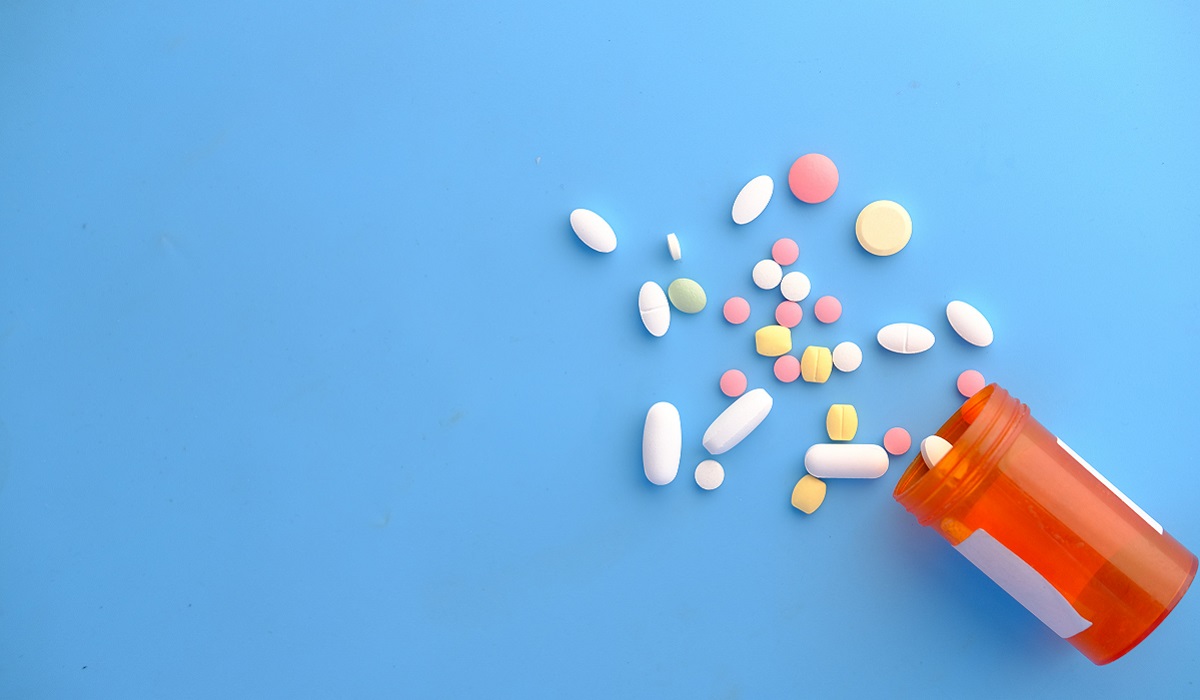
It’s not actually our pain that stands in our way, that infects our lives. It’s our wounds that stand in our way. It’s our wounds that hinder us. It’s our wounds that need to be healed.
Our pain is simply the loyal messenger that will keep delivering its message until it is heeded. It is our pain pleading with us to stop, rest, and heal. It is our pain telling us we cannot keep pushing on up the mountain safely. When we truly stop and listen to it, it can become among our wisest and most important guides, alerting us and directing us to the wounds we must heal.
Pain is the path to purpose
We’ve framed wounding as damaging events that lead to toxic beliefs and emotional pain. But we can also think about wounding as the denial of our emotional needs. Through those wounding events, we are denied the very things that we value and yearn for most: love, belonging, kindness, attention, security, autonomy, etc. If we are betrayed, we are denied trust. If we are neglected, we are denied attention. If we are controlled or stifled, we are denied freedom.
In many cases, wounding events are the very moments our core values truly blossom within us. Through experiencing their absence, we come to know – quite viscerally and profoundly – what in life we most cherish. Our wounds are often actually the source of our values. Our pain then becomes the path to them.
Pain is an important, if not essential, ingredient of our values. Because of that, we might think of our pain as the fourth element of our genius – not something to escape, but another powerful tool at our disposal.
The most impactful change agents seek to understand their pain not just to heal and liberate themselves but because it is a window into their greatest gifts. By understanding their pain, they sharpen and clarify their values and thus access a deeper and even more meaningful sense of purpose. Their values become much more than an intellectual or moral cause. They become something felt deeply within them. Their center of gravity drops from their head down to their heart where they are even more potent.
When change agents allow themselves to engage in this healing work, they come to acknowledge that their change journey is actually both one of growth and of healing, a delicate, mysterious dance between the two. They find purpose both in harnessing their genius in order to foster growth and in listening to and following their pain in order to foster healing. In a way, the two journeys become two sides of the same coin.
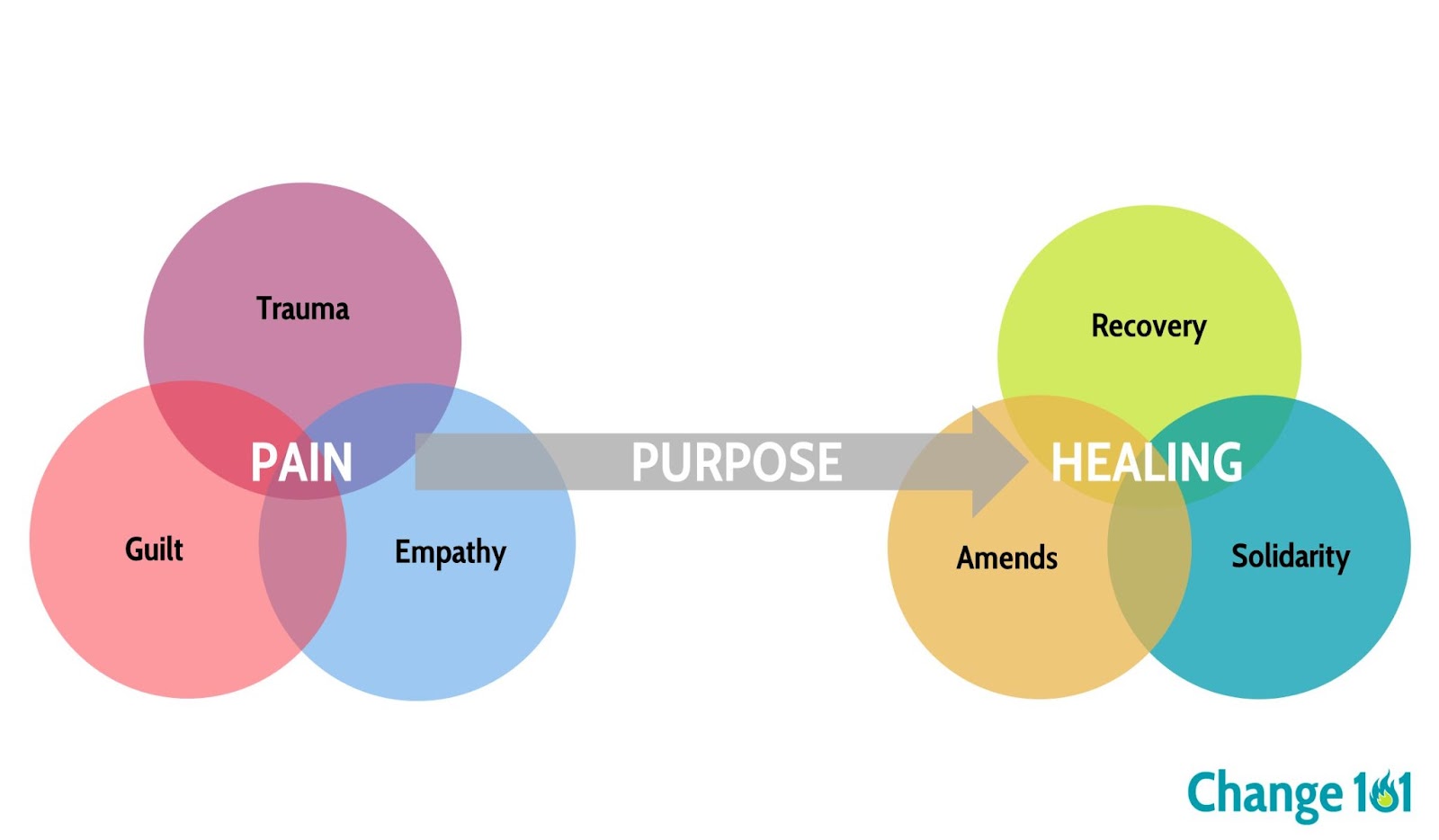
As they heal their own wounds – by recovering from trauma, making amends where they feel guilt, and being in solidarity with those for whom they feel empathy – they inherently heal others and contribute to well-doing in the world. By integrating damaged or detached aspects of themselves, they prevent themselves from hurting others through their coping and numbing behaviors. They also heal their wounds so that they can keep pressing forward up the mountain.
But more than that, they realize that as they work to instill their values in the world, they also heal themselves. In fact, perhaps the most transcendent and highest form of healing our own emotional wounds is to offer to the world what we needed but didn’t get. By offering it to the world, we realize that it was always in us. We realize that we are whole.

